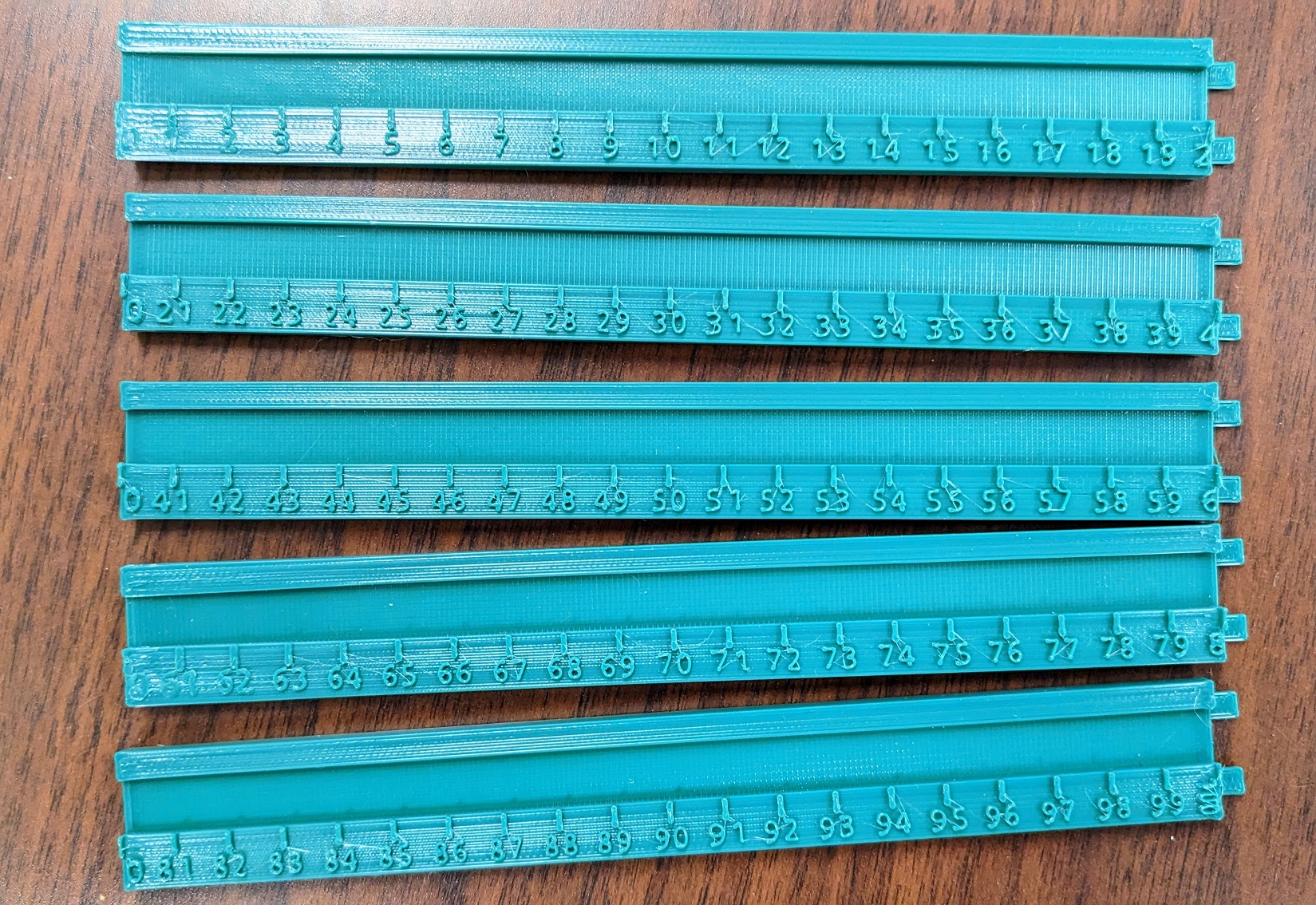Overview
Rod tracks are basically 3D printed number lines with each numeral 1cm apart, and a trough 1cm wide so that different length-based manipulatives can be used with them (Base 10 Blocks, Cuisenaire Rods, Array Rods, etc.). This set was designed so it can be printed on smaller 3D printer beds. Each rod can be put side-by-side with adjacent sections of the number line between 0 to 100 (although one may not need all of that section for particular arithmetic problems).

MakerSpace Files
3D printer version of the files are downloadable here.
Each rod track consumes 20.83 grams of filament, takes 43 minutes to print and costs $0.37.
A full set of five (for the 0 to 100 range) will take a little over 3.5 hours and cost $1.87 worth of filament (assuming $18 / Kg cost of filament).
Note: If you have not read the tutorial post on MakerSpace Manipulatives, please do so.
Examples of Use
Addition & Subtraction with Base Ten
Rod tracks should be used in combination with a length based manipulative such as number rods, array rods, or base ten blocks (tens and ones). One straightforward use is engaging students in addition and subtraction and using base ten to make better sense of the problem. For example, the image below illustrates 24 – 15. A child can be scaffolded to consider what happens when they subtract 24 – 10 and then – 5 (visually seeing 24-10 is 14 and noting the pattern in the numerals). Additional patterns can be focused on. For example, a teacher may ask students to break the 5 into a 4 and 1 to model 24 – 14 – 1.

